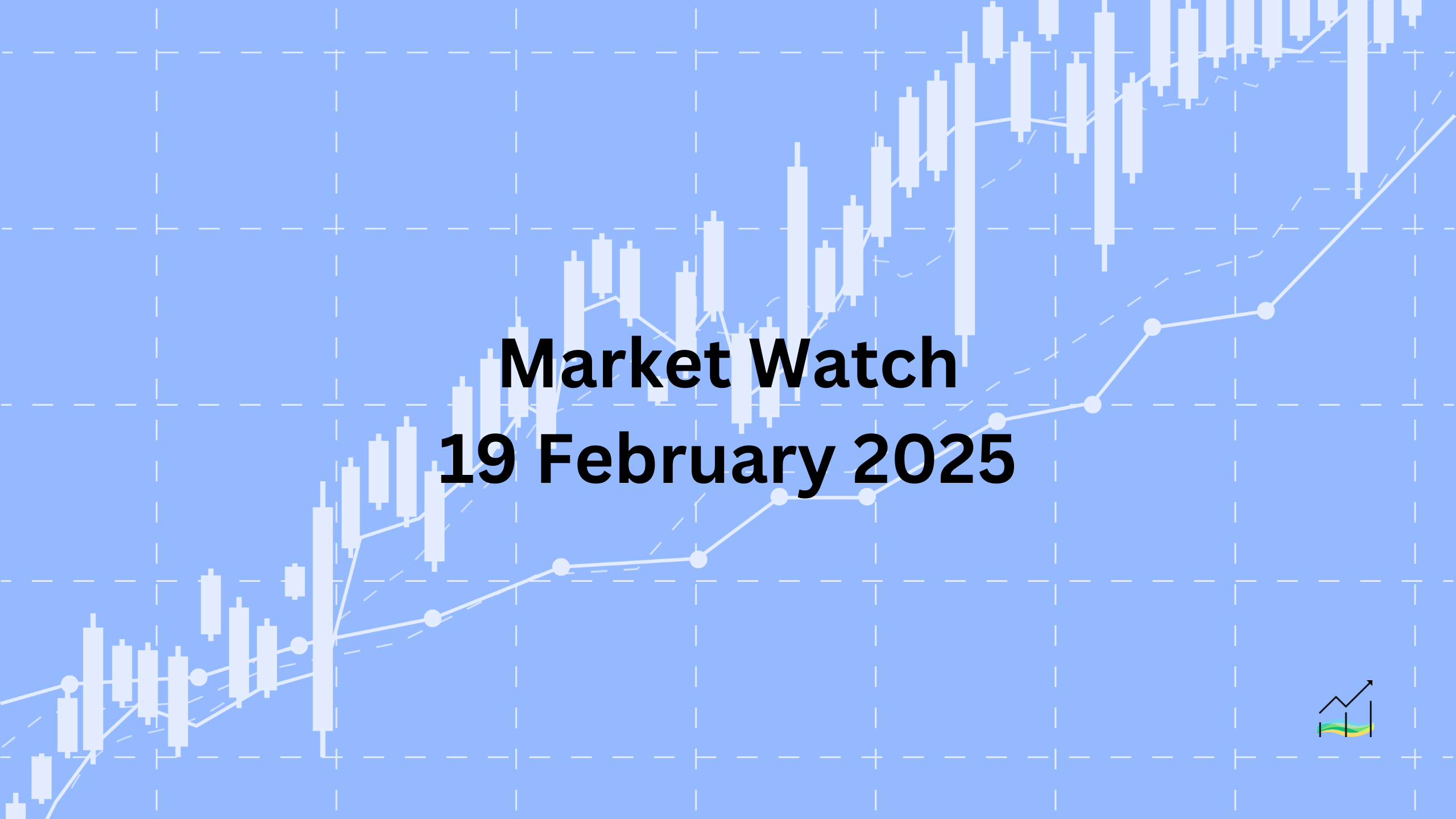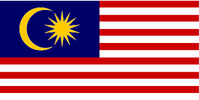19/02/2025 Market Watch

Tariff War Risks, RBNZ Rate Cut
The United States signaled that the next phase of the tariff war could be announced in early April, potentially targeting the auto, pharmaceutical, and semiconductor industries. President Trump indicated a timeline between the announcement and implementation but did not clarify whether USMCA trade would be exempt from auto tariffs. Reports suggest some auto parts cross borders multiple times, adding complexity to potential restrictions.
In the currency markets, the U.S. dollar is mixed against G10 currencies. The Reserve Bank of New Zealand delivered its third consecutive 50-basis-point rate cut, lifting the New Zealand dollar by 0.25%, making it the strongest G10 performer today. Meanwhile, most emerging market currencies are weaker, with central European currencies seeing the most pressure.
Equities are under pressure, with major Asia-Pacific indices declining except for China. Europe's Stoxx 600 has stalled after six gains in the past seven sessions, while U.S. index futures remain soft. Bond yields are rising, with European yields up 3-5 basis points and the 10-year U.S. Treasury yield firming near 4.56%, after closing below 4.48% last week.
In commodities, gold reached a record high of approximately $2,947. Crude oil prices extended their rally after holding key support at $70, with April WTI now trading above the 20-day moving average of $72.15. Last week’s high was near $73.35, indicating further upside momentum.
United States of America
Overview
The Dollar Index has found short-term support near 106.55, but its recent movements lack strong momentum. A close above the five-day moving average of 106.95, which hasn’t happened in over a week, would provide some stability. However, a more significant move above the 107.30-107.55 range is needed for technical confirmation.
Economic Drivers
The market remains focused on the Federal Reserve’s outlook. While the FOMC minutes may attract attention, the Fed’s "patient" stance on rate cuts is well understood. Some officials have hinted at a potential shift in the next Summary of Economic Projections, possibly reducing expected rate cuts from two to one this year. Speculation about a possible rate hike appears unsupported by recent Fed commentary.
Data and Events
December housing starts surged by 15.8%, an unsustainable pace. A pullback of 6.5%-7.0% is expected in January’s figures, while building permits likely fell for the second consecutive month. In 2024, permits have declined by an average of 0.2% per month, following an average monthly increase of 0.9% in 2023.
Price Action
The dollar’s struggle for momentum remains a key focus. Without a firm break above resistance levels, the upside remains limited. Meanwhile, economic data and Fed guidance will shape near-term movements.
Key Points:
- The Dollar Index needs to break 107.30-107.55 for technical confirmation.
- December housing starts jumped 15.8%, but a pullback is expected in January.
- Building permits have declined for two straight months.
- Fed’s stance remains cautious, with possible revision to rate cut projections.
- Speculation of a rate hike lacks supporting evidence.
Australia & New Zealand
Overview
The Australian dollar fluctuated between $0.6340 and $0.6360 in the North American session before briefly touching $0.6370 today. However, it has since pulled back to the $0.6355 area. Despite the well-anticipated rate cut, the market still prices in over a 90% chance of another cut in July. The Aussie has held up well after recovering from its February 3 low of $0.6090, driven by U.S. tariff concerns, but upside momentum has stalled near $0.6375.
Economic Drivers
The Reserve Bank of New Zealand delivered a third consecutive 50-basis-point rate cut, lowering its cash rate target to 3.75%. However, it signaled a slower pace of easing ahead, with an expected target of 3.15% by year-end. Interestingly, the New Zealand dollar is the strongest performer among G10 currencies today, up 0.25%, despite the rate cut.
Data and Events
Australia’s January employment report is due tomorrow, with expectations of slower job growth. December saw a 56.3k employment increase, but this was entirely due to part-time jobs, as full-time employment fell by nearly 24k. Australia hasn’t seen consecutive months of full-time job losses since the pandemic. The unemployment rate is expected to rise to 4.1% after increasing to 4.0% in December from 3.9% in November.
Price Action
The Australian dollar has settled near $0.6355 for three straight sessions, suggesting consolidation. A break below $0.6330, and particularly $0.6300, would weaken the technical outlook.
Key Points:
- The Australian dollar is consolidating after recovering from its February low.
- The market still expects a July rate cut despite the latest decision.
- Australia’s full-time employment fell in December; January data is expected to show a rise in unemployment.
- The New Zealand dollar remains strong despite the RBNZ’s 50 bp rate cut.
- A break below $0.6330-$0.6300 would weaken the Australian dollar’s technical outlook.
Canada
Overview
Canada’s January CPI came in firmer than expected, leading markets to lower the probability of an interest rate cut at next month’s Bank of Canada (BoC) meeting to around 35% from nearly 50% on Monday. However, CPI may not be the main factor influencing the March 12 decision, as the looming U.S. tariffs on Canadian steel and aluminum could have a more significant economic impact.
Economic Drivers
The U.S. has threatened to implement tariffs on March 12, coinciding with the BoC’s policy meeting. These include a 25% tariff on nearly all Canadian exports to the U.S., with energy being the exception, subject to a 10% tariff. Reports suggest that the mere threat of these tariffs is already slowing business activity. With Canada’s parliament not currently in session, monetary policy may bear the initial burden of addressing the potential economic shock.
Data and Events
Despite the firmer core inflation reading, the BoC’s upcoming decision will also be shaped by external risks, particularly trade uncertainty. If tariffs take effect, they could weigh on growth, making future rate cuts more likely.
Price Action
The U.S. dollar initially rose to just below CAD1.4215 following the CPI release but later slipped below CAD1.4180 in pre-European trading. However, demand returned in the European session, pushing the USD/CAD pair back above CAD1.4200.
Key Points:
- Canada’s CPI was stronger than expected, reducing rate cut expectations.
- U.S. tariffs on Canadian exports could be a bigger factor in the BoC’s March decision.
- The threat of tariffs is already affecting business sentiment.
- Monetary policy may have to take the lead in addressing economic risks.
- USD/CAD fluctuated after CPI but remains bid above CAD1.4200.
China
Overview
The US dollar continues to firm, reaching CNH7.2930, a four-day high. Since December 2024, the greenback has largely traded within a range of CNH7.2350 to CNH7.3700. Meanwhile, the People’s Bank of China (PBOC) remains consistent in setting the dollar’s reference rate, keeping it tightly within CNY7.1690–CNY7.1720. Today’s fix was set at CNY7.1705.
Economic Drivers
China’s property market remains under pressure, with new home prices declining by 0.07% in January—the first drop since June 2023. Used home prices also fell by 0.34%, accelerating from December’s pace. The last time second-hand home prices saw an increase was in April 2023, highlighting continued weakness in the real estate sector.
Data and Events
The PBOC’s reference rate has remained stable despite the broader strength of the US dollar. The housing data underscores persistent challenges in China’s property sector, which could weigh on consumer confidence and economic recovery efforts.
Price Action
The USD/CNH has gained momentum, approaching the upper boundary of its recent trading range. The currency pair remains supported by dollar strength, with a potential test of CNH7.3700 if bullish momentum continues.
Key Points:
- The US dollar reached CNH7.2930, the highest in four days.
- The PBOC has kept the yuan’s reference rate steady within a tight range.
- New home prices in China declined for the first time since June 2023.
- Used home prices fell for the ninth consecutive month, last rising in April 2023.
- USD/CNH remains in an upward trajectory, with resistance near CNH7.3700.
Europe
Overview
The euro peaked near $1.0515 before the weekend, falling short of the January high of $1.0535. It now appears to be retracing its recent rally from around $1.0280 on February 10. Yesterday’s close below the five-day moving average for the first time since then signals potential weakness.
Economic Drivers
Germany’s national election is set for Sunday, but its market impact appears minimal. Polls suggest the CDU will win a plurality of votes, while the SPD is likely to place second. The AfD has lost momentum following endorsements from US Vice President Vance and Musk. A CDU-SPD coalition seems the most probable outcome.
Data and Events
The eurozone's December current account surplus expanded to €38.5 billion, up from €28.7 billion in December 2023. Outside of this, the economic calendar is relatively quiet, with no major scheduled events likely to influence the euro in the short term.
Price Action
The euro slipped below $1.0425 in early European trading, marking a 38.2% retracement of its recent gains. Further support is seen around $1.04, with a break below $1.0370 reinforcing the likelihood of a near-term top.
Key Points:
- The euro peaked near $1.0515 but has started retracing gains.
- A close below the five-day moving average signals potential weakness.
- Germany’s election is unlikely to be a major market mover.
- The eurozone’s current account surplus widened in December.
- Key support levels to watch: $1.0425, $1.04, and $1.0370.
Japan
Overview
The dollar peaked near JPY154.80 last week before retreating to JPY151.25 yesterday. While firmer US rates helped stabilize the greenback, it remains below Monday’s high of JPY152.40, which is still acting as resistance. Meanwhile, support around JPY151.25-35 has held firm so far.
Economic Drivers
Japan’s January trade balance followed its typical seasonal pattern, posting a deficit of JPY2.76 trillion (~$18.1 billion), the largest in two years. Imports surged 16.7% year-over-year, driven by strong demand for communication equipment and computers. Exports increased by 7.2%, led by autos and ships. Exports to the US rose 8.1%, likely due to a sharp increase in auto shipments ahead of potential tariffs. In contrast, exports to China fell by 6.2%.
Data and Events
Following stronger-than-expected Q4 GDP data, December core machine orders declined by 1.2% after a 3.4% gain in November. However, the drop drew little market attention. Options for $1.35 billion at JPY152 are set to expire today, adding a potential volatility factor.
Price Action
The dollar remains within a key range, with resistance at JPY152.40 and support at JPY151.25-35. A break above JPY152.40 could see further upside, while a move below JPY151.25 may signal further weakness.
Key Points:
- The dollar fell from JPY154.80 last week to JPY151.25 but stabilized.
- Resistance at JPY152.40 and support at JPY151.25-35 remain intact.
- Japan’s January trade deficit widened to JPY2.76 trillion, the largest in two years.
- Exports rose 7.2%, led by autos and ships, while exports to China declined.
- December core machine orders fell 1.2% but had minimal market impact.
- $1.35 billion in options at JPY152 are expiring today.
United Kingdom
Overview
Sterling remains within last Friday’s range of $1.2550-$1.2630, despite brief violations in thin trading. It reached $1.2640 today but has since slipped below $1.26 in European trading. The pound has recovered 4.35% since mid-January after falling nearly 10% from its September high of $1.3435. While momentum indicators remain extended, a break below $1.2550 could signal the end of the current correction.
Economic Drivers
UK inflation data for January showed a 0.1% monthly decline, but due to base effects, the annual headline CPI rose to 3.0% from 2.5% in December. Service price inflation accelerated to 5.0% from 4.4%, and core inflation increased to 3.9% from 3.2%. Stronger wage growth reported yesterday has reinforced expectations that the Bank of England will delay rate cuts.
Data and Events
Markets now see almost no chance of a BOE rate cut at the March 20 meeting. However, the first rate cut is still expected on May 8, with the probability trimmed to 85% from 90% yesterday and 100% a week ago.
Price Action
Sterling remains in a well-defined range. The key resistance level is around $1.2640, while $1.2550 serves as support. A break below $1.2550 could indicate further downside, while sustained strength above $1.2640 would open the door for further gains.
Key Points:
- Sterling remains in the $1.2550-$1.2630 range, with a brief test of $1.2640.
- The pound has rebounded 4.35% since mid-January but remains below September’s peak of $1.3435.
- UK January CPI rose to 3.0% YoY due to base effects, with service inflation accelerating to 5.0%.
- Core inflation climbed to 3.9%, reinforcing expectations of delayed BOE rate cuts.
- Markets assign near-zero odds to a rate cut in March, with May odds trimmed to 85%.
- A break below $1.2550 could signal the end of the correction.
© 2025 SKONE Enterprise (003319453-V). All rights reserved.
The content on this site is for informational purposes only and does not constitute financial advice.


